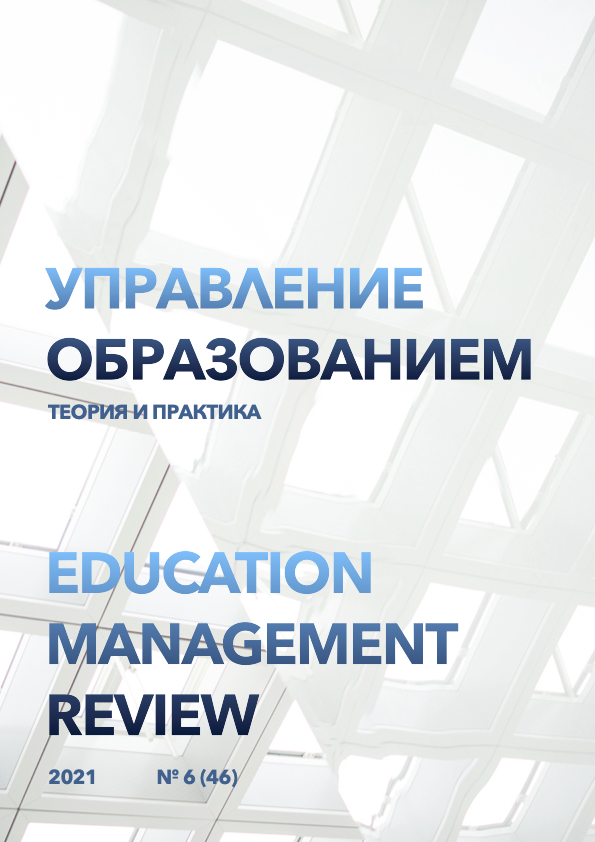Structuring of educational programs in the field of financial literacy
DOI:
https://doi.org/10.25726/z0561-5431-9643-aKeywords:
Education, financial policy, education, process, economicsAbstract
At the turn of the XX-XXI centuries, the government of one of the most developed English–speaking countries in the world - the United States of America, which actively responds to globalization processes by making certain adjustments in time to the structure, content and methods of entrepreneurial education, stressed the shortage of young people with business qualities who are able to work in entrepreneurial firms where there are no clear instructions on how to do business, but there is considerable freedom of choice and initiative. It was noted that the tasks facing the school today should include not only education, but also the formation of personality, career guidance and economic preparation for life in a society functioning in conditions of rapid change. To study the degree of compliance of the quality level of business education with the legally accepted requirements, we have studied in detail the American regulatory documents and acts regulating the functioning of secondary education institutions in this country.
References
Baker, H. K., Tomar, S., Kumar, S., & Verma, D. (2021). Are Indian professional women financially literate and prepared for retirement? Journal of Consumer Affairs, 55(4), 1416–1441. https://doi.org/10.1111/joca.12332
Bucciol, A., Quercia, S., & Sconti, A. (2021). Promoting financial literacy among the elderly: Consequences on confidence. Journal of Economic Psychology, 87. https://doi.org/10.1016/j.joep.2021.102428
Chen, M., Yang, F., & Choi, Y. (2021). Are credit-based internet consumer finance platforms sustainable? A study on continuous use intention of Chinese users. Sustainability (Switzerland), 13(24). https://doi.org/10.3390/su132413629
Cicchiello, A. F., Kazemikhasragh, A., Monferrá, S., & Girón, A. (2021). Financial inclusion and development in the least developed countries in Asia and Africa. Journal of Innovation and Entrepreneurship, 10(1). https://doi.org/10.1186/s13731-021-00190-4
Cohen, F. (2021). Ecologies of Care for Serious Mental Illness in Uganda: a Scoping Review. Global Social Welfare, 8(4), 301–315. https://doi.org/10.1007/s40609-020-00193-1
Cupák, A., Fessler, P., Silgoner, M., & Ulbrich, E. (2021). Exploring Differences in Financial Literacy Across Countries: The Role of Individual Characteristics and Institutions. Social Indicators Research, 158(2), 409–438. https://doi.org/10.1007/s11205-021-02713-8
Everaert, P., & Safari, M. (2021). Digital self-contained module to assist a writing task on evaluating the financial, social, and environmental performance of a company: Teaching note. Journal of Accounting Education, 57. https://doi.org/10.1016/j.jaccedu.2021.100752
Hamad, F., Al-Fadel, M., & Fakhouri, H. (2021). The effect of librarians’ digital skills on technology acceptance in academic libraries in Jordan. Journal of Librarianship and Information Science, 53(4), 589–600. https://doi.org/10.1177/0961000620966644
Koh, T. J. W., Ling, A. H. Z., Chiang, C. L. L., Lee, G. S. J., Tay, H. S. E., & Yi, H. (2021). Attitudes towards COVID-19 precautionary measures and willingness to work during an outbreak among medical students in Singapore: a mixed-methods study. BMC Medical Education, 21(1). https://doi.org/10.1186/s12909-021-02762-0
Lu, X., Xiao, J., & Wu, Y. (2021). Financial literacy and household asset allocation: Evidence from micro-data in China. Journal of Consumer Affairs, 55(4), 1464–1488. https://doi.org/10.1111/joca.12406
Morisod, K., Luta, X., Marti, J., Spycher, J., Malebranche, M., & Bodenmann, P. (2021). Measuring Health Equity in Emergency Care Using Routinely Collected Data: A Systematic Review. Health Equity, 5(1), 801–817. https://doi.org/10.1089/heq.2021.0035
Muller, L. A., & Turner, J. A. (2021). Financial literacy, the “high-fee puzzle,” and knowledge about the importance of fees. Journal of Retirement, 8(3), 29–38. https://doi.org/10.3905/JOR.2020.1.078
Park, C. M., Kraus, A. D., Dai, Y., Fantry, C., Block, T., Kelder, B., … Solberg, V. S. H. (2021). Empowering women in finance through developing girls’ financial literacy skills in the United States. Behavioral Sciences, 11(12). https://doi.org/10.3390/bs11120176
Silinskas, G., Ahonen, A. K., & Wilska, T.-A. (2021). Financial literacy among Finnish adolescents in PISA 2018: the role of financial learning and dispositional factors. Large-Scale Assessments in Education, 9(1). https://doi.org/10.1186/s40536-021-00118-0
Sun, R., Zhang, H., Turvey, C. G., & Xiong, X. (2021). Impact of Financial Literacy on Retirement Financial Portfolio: Evidence from China*. Asian Economic Journal, 35(4), 390–412. https://doi.org/10.1111/asej.12256




